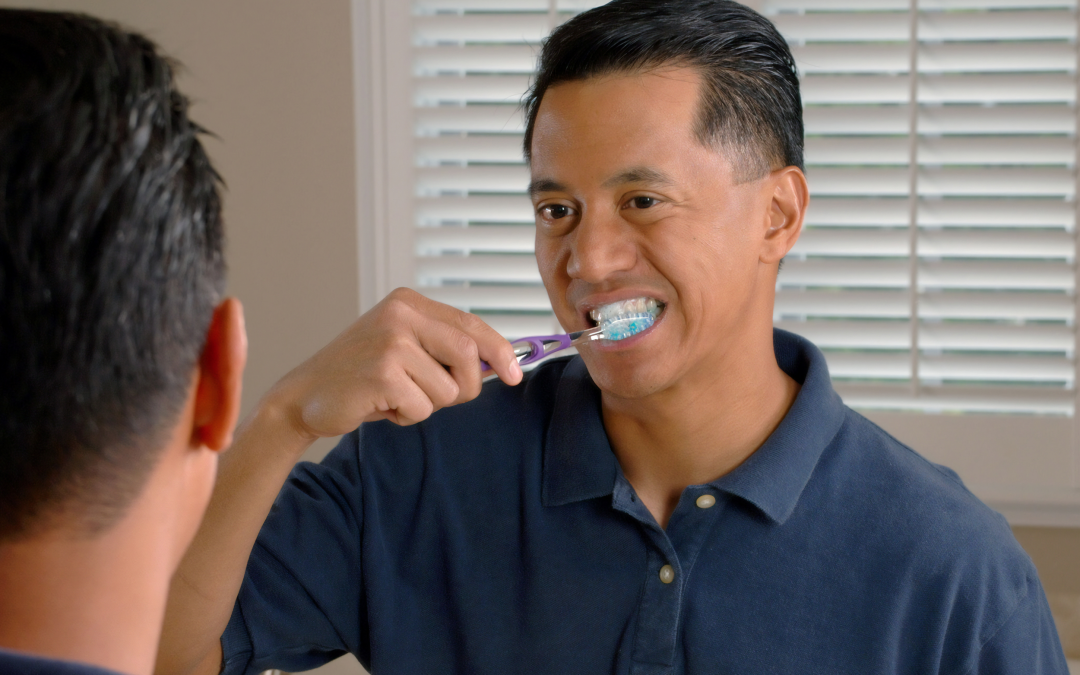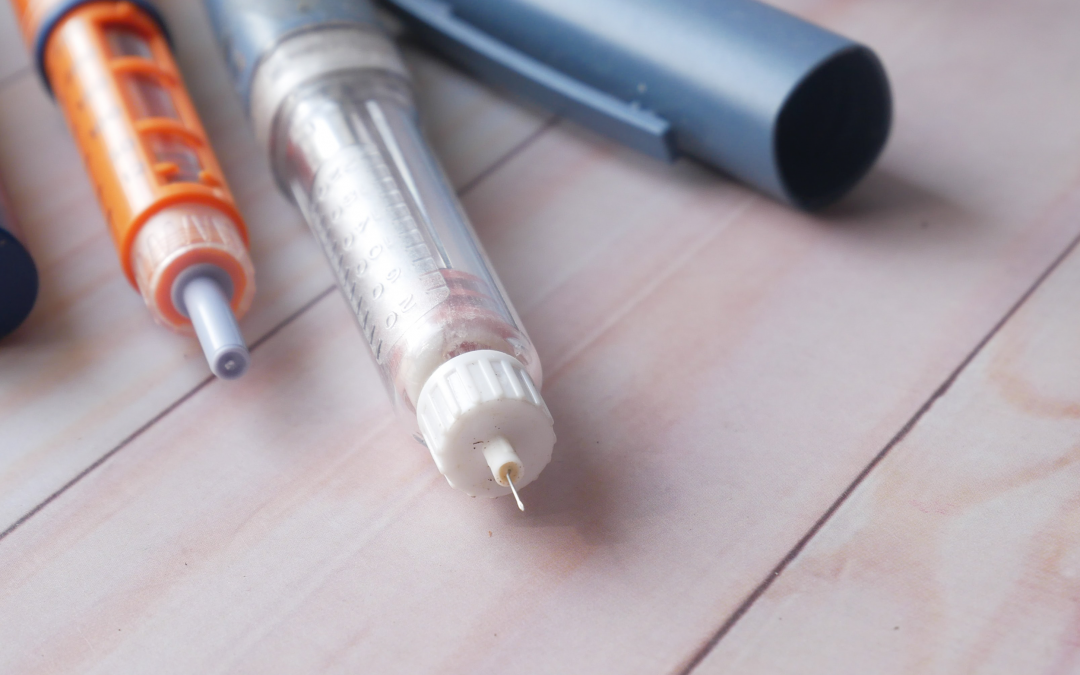
by Roseman Dental | Feb 8, 2022 | Dental Clinic Blog, Oral Health, Roseman Dental - NV, Roseman Dental - UT
With Valentine’s Day just around the corner and Easter coming soon, it’s time to start thinking about indulgent treats and how they affect our bodies. Many people consider only calories as they think about the treats they want to eat around holiday seasons, but have you ever stopped to think about your teeth? Sugary treats can be harmful to your teeth. Here are some ways to have both a sweet and teeth-safe holiday.
Whole-Wheat Flour
One of the easiest tooth-friendly changes you can make is to substitute whole-wheat flour for standard white flour in your favorite recipes. White flour, as with all refined foods, quickly breaks down into simple sugar. This occurs while the food is still in your mouth. Bacteria in your mouth feast on this sugar, producing acid that breaks down your enamel. Whole wheat flour is harder to break down, and will not produce simple sugar as quickly as white flour will. If you find the flavor or texture of whole-wheat flour is too strong, try easing yourself into it by baking with half whole-wheat flour and half all-purpose or white flour. Then, gradually increase the amount of wheat flour. This works for any recipe that calls for flour, including rolls, cakes and holiday treats. You can also buy many bread products in whole-wheat or half-and-half varieties.
Alternatives to Refined Sugar
There are lots of baking alternatives for granulated sugar. Try substituting honey, real maple syrup, brown rice syrup or agave nectar next time you bake a delicious treat. As an added health benefit, both honey and maple syrup contain lots of antioxidants!
Another great alternative to sugar is fruit. Try adding applesauce, raisins, or pureed banana or apricots in place of some or all of the processed sugar in a recipe. Natural sugars are less harmful to your body than highly processed granulated sugar.
Non-Sugar Solutions
It’s possible to eliminate all sugar from your recipe while baking and cooking this holiday season. This could mean choosing recipes that contain no sugar, like all-fruit sorbets or tart treats with sour or bitter flavor profiles. But it could also mean substituting artificial sugar for the real tooth-harming thing. If you’ve never tried them before, you could experiment with sugar alcohols like erythritol or xylitol. Sugar alcohols are nearly calorie free, and are, in fact, good for your teeth—for that reason sugar alcohols are commonly added to some gums and toothpastes. They are not as sweet as sugar, so you may need to add a little extra, but overall they make an excellent sugar substitute. You can also try traditional artificial sweeteners, but beware of health benefits and drawbacks before you use them.
If you do consume treats from the store (often made with processed sugars), or you have some sugary treats without the healthy teeth substitutes, make sure you brush your teeth soon after to keep bacteria away.
Sometimes you want to indulge in a holiday treat, and by taking these steps you won’t have to worry about your teeth. Bake teeth-smart and enjoy your holidays.

by Roseman Dental | Dec 14, 2021 | Dental Clinic Blog, Oral Health, Roseman Dental - NV, Roseman Dental - UT
Proper dental hygiene at home goes a long way toward keeping your mouth healthy. Brushing and flossing at least twice a day is an important part of your oral health regimen. In addition, a regular cleaning and examination at the dentist’s office is necessary to ensure the longevity of your teeth.
Early Detection
Dentists recommend that patients come in for a professional cleaning every six months. These visits usually include X-rays to check for tooth health and cavities, and a special cleaning by the hygienist to remove plaque with a polisher and metal scaler. When the cleaning is done, the dentist looks for plaque formation and cavities, and checks for signs of inflammation or other warning of potential problems. If detected early, cavities can be drilled and filled while they are small, before they abscess. Abscessed teeth often need to be pulled, and can also lead to a root canal in adults or a pulpectomy in children. Regular visits to the dentist can save you the pain of these procedures by catching problems early.
Save Your Smile
Without regular cleanings, minor tooth problems can get out of control. Besides a root canal, poor hygiene and infrequent dental check-ups can lead to the need for more complex procedures, including extractions, bridges, crowns, veneers, implants, and dentures. Dentists are also often the first ones to notice that braces or other corrective devices are necessary. Braces and retainers not only make smiles straighter and more pleasing; they also ensure that teeth line up correctly for chewing, speaking, and swallowing, all vital functions of your mouth.
Save Money
Skipping or not scheduling dentist appointments puts your teeth at risk. While there is a cost to getting regular cleanings and check-ups, waiting until a dental emergency can cost a lot more. Many dental insurance plans cover the cost of cleanings, and patients without insurance can often work with a dentist to get an affordable price. Medical procedures such as pulling teeth, drilling cavities, crowning teeth and inserting bridges can cost hundreds or even thousands of, so it makes financial sense to get a check-up and cleaning every six months and avoid the cost (and discomfort) of repairing problems that could have been detected early.
Keeping up with your dentist doesn’t have to be a challenge. Schedule the next appointment at every visit. During a move, add “find a dentist” to the to-do list, right along with “update address.” Going to the dentist regularly is one of the simplest, and most important, ways to maintain dental health.

by Roseman Dental | Dec 14, 2021 | Dental Clinic Blog, Oral Health, Roseman Dental - NV, Roseman Dental - UT
Your body changes as you grow and age, and your mouth is no exception. Understanding how your mouth changes with age will help you make the right decisions to stay healthy.
Tooth Anatomy
The teeth have several parts:
- The outermost layer is the enamel. This is the part of the tooth you are accustomed to seeing, and is the strongest tissue in the body. It is hard, shiny, and white, and covers the chewing surface or crown of the tooth.
- Dentin is a brown layer below the enamel, and makes up most of the tooth. Although dentin is porous, it’s hard and solid.
- Below the dentin is the pulp of the tooth. This soft tissue houses blood vessels, nerves and other connective tissue, nourishing teeth as they grow. Once teeth are mature, the pulp provides sensory input from the tooth to the body.
- Each tooth has roots, which are anchored in bone.
- Teeth are surrounded by soft pink tissue called gums.
Your Aging Mouth: Enamel and Dentin
Once a tooth reaches maturity, it contains all the enamel it will ever have. The dentin layer, however, is constantly growing thicker. Though teeth start out completely covered in white enamel, the enamel wears away over time. At the same time, the brown dentin layer continues to thicken. The result is a darkening or discoloration of the teeth with age as the dentin layer becomes visible below the enamel. Even good oral hygiene cannot stop these changes from occurring. However, bleaching or veneers can help whiten teeth for improved appearance.
Your Aging Mouth: Pulp, Bones and Gums
As the dentin in teeth thickens, the pulp chamber inside the teeth shrinks. This leads to less sensitive teeth, which can be a problem because cavities may go undetected in older people with decreased tooth sensitivity. Gum disease can cause bones in the jaw and mouth to deteriorate. Bacteria and plaque on the teeth cause pockets to form between your teeth and gums, leading to infection. If left untreated, this infection can deteriorate the bones, causing teeth to loosen or fall out. Warning signs of gum diseases include bleeding gums or teeth that appear longer than they once did. This can be an indication that the gums are pulling away from the teeth. If you think you may have gum disease, regardless of your age, see a dentist at once.
As you age, your body matures and changes. Being aware of these changes can help you make informed decisions about your health. The providers at Roseman Dental are great resources for understanding dental health and accessing high quality, affordable dental care.

by Roseman Dental | Nov 9, 2021 | Dental Clinic Blog, Oral Health, Roseman Dental - NV, Roseman Dental - UT
If you are the parent of a baby or toddler and your family has successfully made it through the dreaded teething stage, you may be wondering what the next step is in terms of your child’s oral hygiene and care. Dental professionals agree that the sooner a child can see a dentist, the better. This is particularly true when it comes to preventing dental health issues. Periodontal disease and many other dental problems that commonly affect children are more likely to occur in children who do not receive regular dental care and evaluations.
If you’re thinking it’s not that big of a deal because your child will lose those baby teeth anyway, keep in mind that these issues can lead to a broad range of more significant problems down the line, including nutritional problems from trouble eating and drinking, and problems with speech development and self-esteem.
When to Schedule Your Child’s First Dental Visit
According to the American Academy of Pediatric Dentistry (AAPD), infants and toddlers should have an oral evaluation performed within six months of the appearance of his or her first tooth. Because there’s so much variability among children as to when that first tooth erupts, AAPD recommends visiting a dentist for an evaluation before the child’s first birthday even if that first tooth has yet to appear.
Oral Health at Home
While seeing a dentist early on improves your child’s chances of optimal oral health, there are several other things you can do in the comfort of your own home. AAPD recommends avoiding putting children to sleep with a bottle of milk or juice, and not allowing them to sip on a bottle with those things in it throughout the day either. Both actions increase your child’s chance of tooth decay. If your child has trouble falling asleep without a bottle, make sure it contains only water, and try to take it away entirely before your child hits the one-year mark.
Another tip is to gently wipe their gums and teeth with a soft washcloth to remove bacteria, and to start doing this early on so they get used to it. There are also infant “brushes” that go on the finger.
When it comes to your child’s oral health, prevention is paramount. Taking the aforementioned tips and seeing a dentist early on are the best ways to set your child up for healthy teeth and gums. Roseman Dental offers care for even the youngest members of your family.
.

by Roseman Dental | Nov 9, 2021 | Dental Clinic Blog, Oral Health, Roseman Dental - NV, Roseman Dental - UT
Spending your day in the dentist’s chair having plaque scraped from teeth is no fun. While it is necessary to go to your dentist for regular cleanings, there are also some things you can do to prevent plaque build-up before you get to the dentist. Most people would probably rather go this route because it usually means a short and uneventful checkup.
Plaque 101
Plaque is a sticky layer of bacteria and sugars. It forms a film on teeth that makes them feel rough to the tongue. Acids in plaque attack the teeth, which eventually leads to cavities. When plaque forms below the gumline and between teeth, the bacteria may also begin to attack the sensitive tissue of the gums, leading to gum disease. As gums become infected, they pull away from the roots of the teeth and form pockets full of bacteria and pus. This can lead to tooth loss, as well as a number of other serious health problems.
Preventing Plaque Buildup
Although everyone develops plaque, no one has to put up with it on their teeth. Proper brushing and flossing techniques successfully remove most plaque. Since plaque is continually produced from the reactions of bacteria, saliva, and food, brushing and flossing should be done at the beginning of the day and the end, as well as after meals or after consuming drinks or foods high in sugar. In some cases, brushing and flossing within thirty minutes of eating or drinking may harm enamel softened by acid, so it’s best to wait a little while after eating before you brush.
Proper Brushing Technique
The American Dental Association recommends using a soft-bristled toothbrush that is small enough to reach all areas of the mouth. Make sure you’re using a toothpaste that contains fluoride, which strengthens tooth enamel. The bristles should move gently along the gums and teeth at a 45 degree angle in short, circular strokes that cover all the surfaces of each tooth. Brushing the tongue is also recommended to remove excess bacteria.
Proper Flossing Technique
Floss is the most effective tool for fighting plaque. The floss should be guided between teeth with a gentle back and forth motion, following the sides of each tooth all the way up to the point where it meets resistance at the gumline. Although it is best to floss every day, even flossing three or four times each week is helpful in removing some plaque, protecting the gums from disease, and shortening the time in the dental chair.
Even if you follow all these tips for removing plaque, there is still no substitute for a dental checkup and cleaning (recommended every six months). However, if you keep your teeth clean in between checkups, your next dentist visit should be quick and easy. Make an appointment at Roseman Dental for a full check-up from one of our highly qualified and compassionate providers.

by Roseman Dental | Nov 9, 2021 | Dental Clinic Blog, Oral Health, Roseman Dental - NV, Roseman Dental - UT
November is National Diabetes Month. In honor of diabetes awareness, consider the link between diabetes and oral health. Diabetes is very closely linked to overall health, and the two can have a big impact on one another. If you or someone you know is diabetic, take time to learn about this important connection.
The Connection
Simply put, having diabetes increases the risk of gum disease and periodontitis, or serious gum disease. This is due in part to a diabetic person’s decreased ability to fight bacteria. If your blood sugar levels are not well under control, your ability to fight germs is compromised, making infection of any kind more likely. Other infections that can occur in your mouth include thrush (a mouth fungus overgrowth that causes an infection), dry mouth, ulcers and cavities. Serious gum disease can also affect your blood sugar levels, increasing the rate at which diabetes progresses.
What is Gum Disease?
Gum disease is caused by bacteria in your mouth. When gum disease becomes serious, your gums begin to pull away from your teeth, leaving pockets between the gums and teeth that can fill with bacteria and other germs. As the pockets grow deeper, the infection can spread and destroy the bones that hold your teeth in place. If this happens, surgery may be needed to preserve the teeth. Without treatment, teeth can loosen and may fall out.
Warning Signs
Gum disease doesn’t happen overnight. Recognizing the warning signs and seeking treatment can prevent tooth loss from infection. Unfortunately, many of the warning signs of gum disease are painless. The most obvious signs are bleeding, swollen, or tender gums. Even if they don’t hurt, bleeding gums are an indication of an overgrowth of bacteria in your mouth, as are swollen or tender gums. If you notice that your teeth look longer, this may indicate that the gums are pulling away from the teeth, another sign of developing gum disease. If pressing on the gums produces pus or if adult teeth are loose or moving, this is also a sign of serious gum disease. Lastly, if you notice changes in your bite or the fit of dentures or bridges, you should speak with a dentist about gum disease.
The best way to prevent serious gum disease from developing is to see a dentist regularly, at least every six months. It’s also a good idea to see the same dentist, because then he or she can recognize subtle changes in your gums that may not be obvious if you are seeing different dentists each time you get your teeth cleaned. If you have serious gum disease, the dentist may recommend that you come in more often than every six months.
Prevention
If you have diabetes, a well-regulated blood sugar level is your first defense against gum disease, and all other infections. Beyond that, brushing and flossing twice daily will help keep your mouth healthy, as will regular visits to the dentist. While at the dentist, be sure to discuss your diabetes and its relationship to good oral health. Diabetes can make you more susceptible to gum disease, but that doesn’t mean there is nothing you can do. Heeding the warning signs and caring for your teeth and gums will help your mouth stay healthy for years to come.








